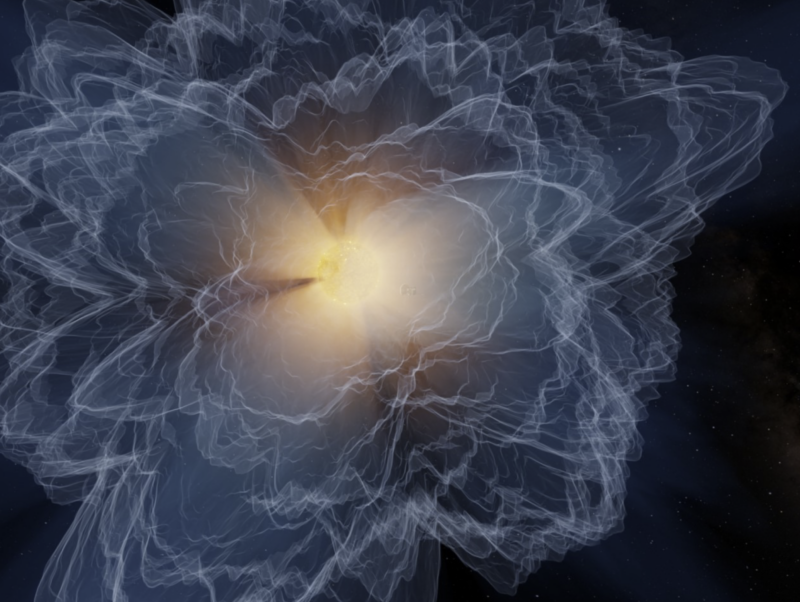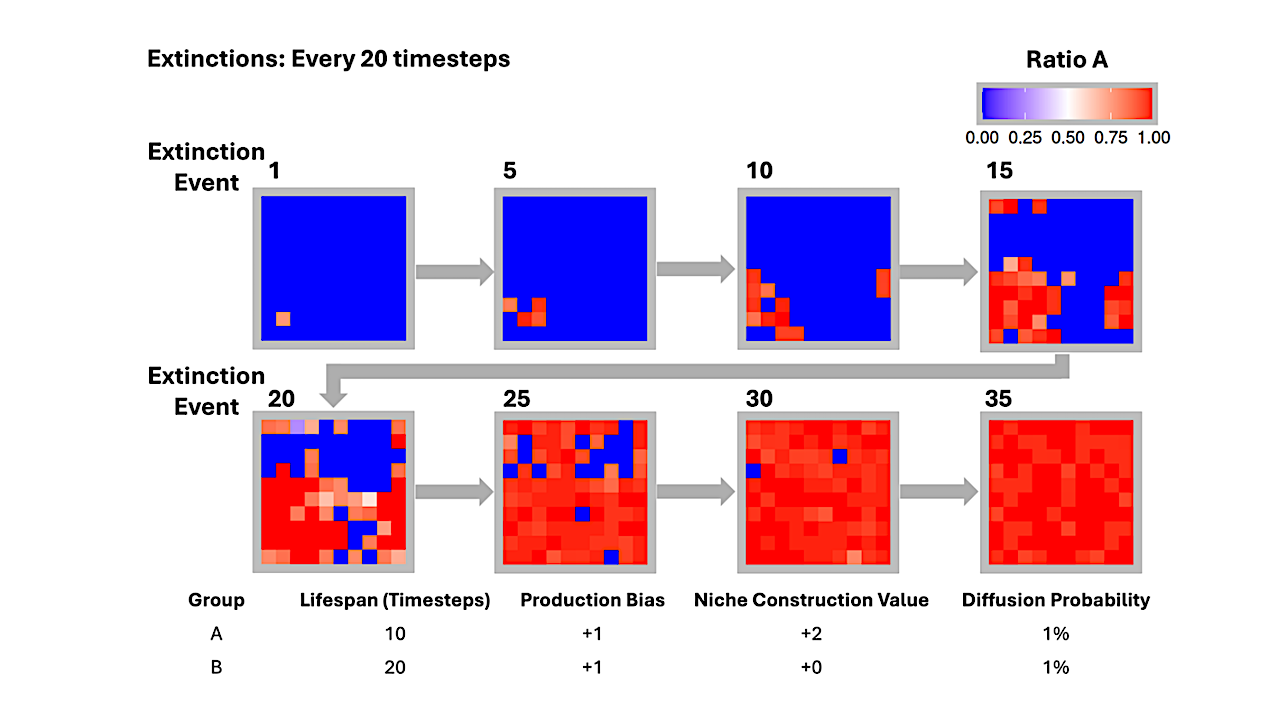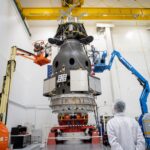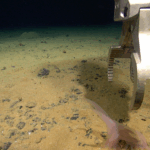Now Reading: Europa Clipper successfully tests radar during Mars flyby
-
01
Europa Clipper successfully tests radar during Mars flyby
Europa Clipper successfully tests radar during Mars flyby
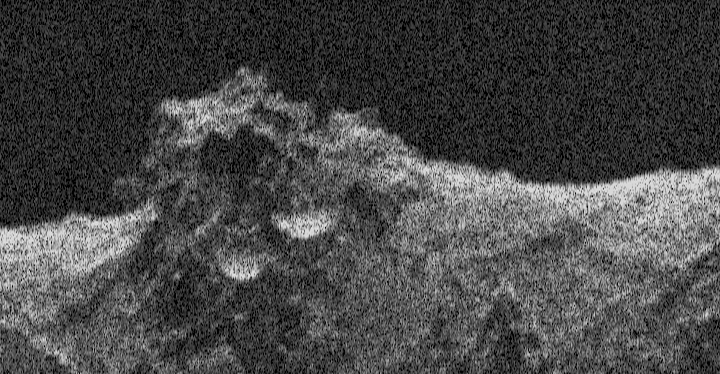
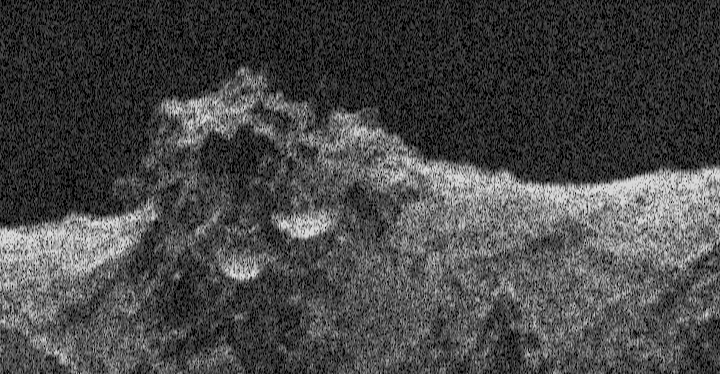
- NASA’s Europa Clipper spacecraft zipped past Mars in March 2025, using the planet’s gravity to build up speed on its way to Jupiter’s icy moon Europa.
- Mission scientists used the flyby to test Europa’s radar instrument, which will allow the craft to peer below Europa’s thick icy crust.
- The test was a success, with a radar image of Mars’ surface proving that the instrument is working as intended.
NASA published this original article on August 1, 2025. Edits by EarthSky.
Europa Clipper successfully tests radar during Mars flyby
As it soared past Mars in March 2025, NASA’s Europa Clipper conducted a critical radar test that had been impossible to accomplish on Earth. Now that mission scientists have studied the full stream of data, they can declare success: the radar performed just as expected, bouncing and receiving signals off the region around Mars’ equator without a hitch.
Called REASON (Radar for Europa Assessment and Sounding: Ocean to Near-surface), Europa Clipper’s radar instrument will “see” into Europa’s icy shell, which may have pockets of water inside. The radar may even be able to detect the ocean beneath the shell of Jupiter’s 4th-largest moon.
Don Blankenship, principal investigator of the radar instrument, said:
We got everything out of the flyby that we dreamed. The goal was to determine the radar’s readiness for the Europa mission, and it worked. Every part of the instrument proved itself to do exactly what we intended.

Europa Clipper’s unusual radar system
Europa Clipper radar will help scientists understand how the ice may capture materials from the ocean and transfer them to the surface of the moon. Above ground, the instrument will help to study elements of Europa’s topography, such as ridges, so scientists can examine how they relate to features that REASON images beneath the surface.
Europa Clipper has an unusual radar setup for an interplanetary spacecraft: REASON uses two pairs of slender antennas that jut out from the solar arrays, spanning a distance of about 58 feet (17.7 meters). Those arrays themselves are huge – from tip to tip, the size of a basketball court – so they can catch as much light as possible at Europa, which gets about 1/25 as much sunlight as Earth.
The instrument team conducted all the testing that was possible prior to the spacecraft’s launch from NASA’s Kennedy Space Center in Florida on October 14, 2024. During development, engineers at the agency’s Jet Propulsion Laboratory in Southern California even took the work outdoors, using open-air towers on a plateau above JPL to stretch out and test engineering models of the instrument’s spindly high-frequency and more compact very-high-frequency antennas.
But once the actual flight hardware was built, it needed to be kept sterile and could be tested only in an enclosed area. Engineers used the giant High Bay 1 clean room at JPL, where the spacecraft was assembled, to test the instrument piece by piece. To test the “echo,” or the bounceback of REASON’s signals, however, they’d have needed a chamber about 250 feet (76 meters) long, nearly 3/4 the length of a football field.
Europa Clipper flew past Mars in March
The mission’s primary goal in flying by Mars on March 1, less than five months after launch, was to use the planet’s gravitational pull to reshape the spacecraft’s trajectory. But it also presented opportunities to calibrate the spacecraft’s infrared camera and perform a dry run of the radar instrument over terrain NASA scientists have been studying for decades.
As Europa Clipper zipped by the volcanic plains of the red planet – starting at 3,100 miles (5,000 kilometers) down to 550 miles (885 kilometers) above the surface – REASON sent and received radio waves for about 40 minutes. In comparison, at Europa the instrument will operate as close as 16 miles (26 kilometers) from the moon’s surface.
A successful test
All told, engineers were able to collect 60 gigabytes of rich data from the instrument. Almost immediately, they could tell REASON was working well. The flight team scheduled the full dataset to download, starting in mid-May. Scientists relished the opportunity over the next couple of months to examine the information in detail and compare notes.
Trina Ray, Europa Clipper deputy science manager, said:
The engineers were excited that their test worked so perfectly. All of us who had worked so hard to make this test happen – and the scientists seeing the data for the first time – were ecstatic, saying, ‘Oh, look at this! Oh, look at that!’ Now, the science team is getting a head start on learning how to process the data and understand the instrument’s behavior compared to models. They are exercising those muscles just like they will out at Europa.
Europa Clipper will reach the icy moon in 2030. Its 1.8-billion-mile-journey (2.9 billion kilometers) includes one more gravity assist – this time using Earth – in 2026.
Bottom line: Europa Clipper tested its radar during a Mars flyby in March 2025. The newly announced results show the instrument is working as hoped.
Read more: Europa Clipper en route and all systems go
The post Europa Clipper successfully tests radar during Mars flyby first appeared on EarthSky.
Stay Informed With the Latest & Most Important News
-
 012024 in Review: Highlights from NASA in Silicon Valley
012024 in Review: Highlights from NASA in Silicon Valley -
 02Panasonic Leica Summilux DG 15mm f/1.7 ASPH review
02Panasonic Leica Summilux DG 15mm f/1.7 ASPH review -
 03From Polymerization-Enabled Folding and Assembly to Chemical Evolution: Key Processes for Emergence of Functional Polymers in the Origin of Life
03From Polymerization-Enabled Folding and Assembly to Chemical Evolution: Key Processes for Emergence of Functional Polymers in the Origin of Life -
 04How New NASA, India Earth Satellite NISAR Will See Earth
04How New NASA, India Earth Satellite NISAR Will See Earth -
 05And Thus Begins A New Year For Life On Earth
05And Thus Begins A New Year For Life On Earth -
 06Astronomy Activation Ambassadors: A New Era
06Astronomy Activation Ambassadors: A New Era -
07SpaceX launch surge helps set new global launch record in 2024












